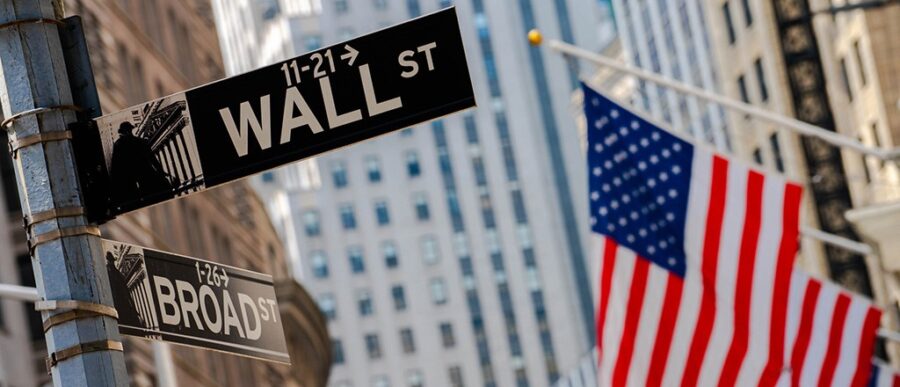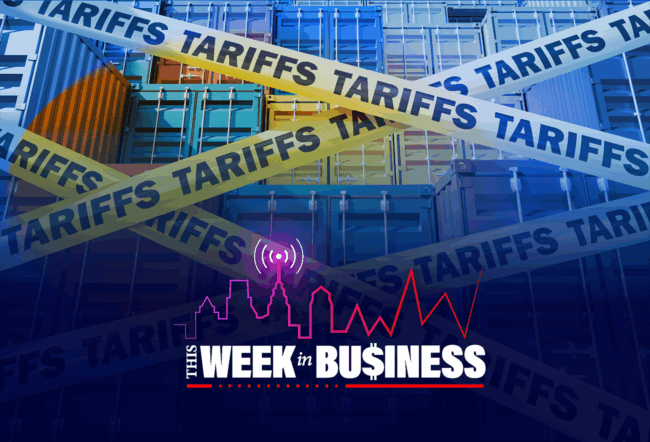The continuing strength of the stock market even as the coronavirus pandemic batters the U.S. economy has baffled many observers. The Dow Jones Industrial Index fell some 30% in the first three weeks of March as COVID-19 began spreading rapidly globally, but it has since gained nearly 60% to current levels above 28,650. Meanwhile, the U.S. economy shrank 31.7% in the April-June quarter, the Commerce Department reported last Thursday.
During a recent segment of the Wharton Business Daily radio show on SiriusXM, Wharton finance professor Itay Goldstein identified three factors that explain the apparent disconnect between the stock market and the economy. (Listen to the podcast above.)
Fast Forward, and a Fed Push
The first, which is true of all times, is that “the stock market is meant to be forward-looking,” Goldstein said. “In general, the stock market is a bit different from the economy, in the sense that what you see right now in the economy is what is going on right now” such as production, employment and so forth, he noted. Even in “normal times,” stock prices and economic output would not move in tandem, according to Goldstein. In fact, we may have situations “where the stock prices may predict something that is going to be different from what we see right now.”
Secondly, the Federal Reserve has “put a lot of money into the market, and that certainly helps keep prices up, maybe above what we would expect without this intervention,” said Goldstein.
“The fact that the Fed started injecting all this money into the market pushed prices up.” –Itay Goldstein
“What the Fed is doing right now is unprecedented,” he continued. The Fed has continued on the trajectory of low interest rates since mid-2019, but also pressed on with its “quantitative easing” approach to inject liquidity into the financial system, which it had used in the aftermath of the 2008-2009 financial crisis. “In recent months, it is not only doing the traditional quantitative easing of buying treasuries and mortgage-backed securities, but also continuing to buy other assets like corporate bonds, which is something that the Fed has not done before.”
In March, in response to the pandemic, the Federal Reserve announced a stimulus package that included expanded windows for its purchase of securities and new credit facilities for businesses and municipalities.
“The fact that the Fed started injecting all this money into the market pushed prices up,” said Goldstein. The prices of assets are “mechanically pushed up” by the Fed’s act of purchasing them. That causes prices for other assets also to rise, “because investors are always looking for places to put their money,” he added.
Last Thursday, Federal Reserve Chairman Jerome Powell spoke of a shift in its inflation goals, “signaling that it wanted inflation to rise modestly above its 2% target,” as a Wall Street Journal report said. That essentially “ushers in a longer era of lower rates,” the Journal noted. Stocks were mixed in their reaction to Powell’s remarks, but generally trended higher.
“Inflation that is persistently too low can pose serious risks to the economy,” Powell had noted. “Inflation that runs below its desired level can lead to an unwelcome fall in longer-term inflation expectations, which, in turn, can pull actual inflation even lower, resulting in an adverse cycle of ever-lower inflation and inflation expectations.” The Fed was clearly worried about the prospect of the U.S. facing a sustained period of low inflation, a trap that ensnared Japan and Europe, the Journal article said.
“Powell’s statement reinforces the expectation that the Fed will continue to have very low interest rates for a while, which will continue to be a force pushing market prices up,” Goldstein told Knowledge at Wharton. “There was nothing in the statement that changed things in the short term. But the change in framework that was described implies that the Fed will not quickly raise rates when inflation starts to rise. Hence, one should expect rates to remain low for even longer.”
To be sure, the stock markets are factoring in expectations that the U.S. economy will rebound 20% or more in the current third quarter, with the lifting of lockdowns and resumption of modest economic activity in many parts of the country. The latest tally for jobless claims also brought cheer as it fell to 1 million in the week ended August 22, a sharp reversal from the peak of 7 million in March; however, it is five times as large as pre-pandemic levels of about 200,000 a week.
Apples and Oranges
The third factor is the fact that “the stock market is a collection of firms that is not necessarily representative of the economy as a whole,” Goldstein said. “That is amplified these days.”
“The stocks that are doing very well – Google, Facebook, Amazon, Microsoft, Netflix – haven’t been hurt that much by the current economic conditions.” –Itay Goldstein
In fact, the stocks that have been gaining strength do not really reflect the pain from the pandemic. “In particular, the stocks that are doing very well – Google, Facebook, Amazon, Microsoft, Netflix – haven’t been hurt that much by the current economic conditions. Some of them maybe have benefited from them. They are very dominant in the stock market, but they are not necessarily representing the economy as a whole.”
The disconnect extends to the share of those companies in employment or other macroeconomic parameters. “It’s very easy to look at the stock market, see those headlines, see those firms doing very well and pulling the market up,” Goldstein said. “But at the same time, their contribution to the overall economy is not as big.”
Further, Goldstein pointed out that many small businesses are hurt by the current economic conditions. “They certainly are affecting employment data, output data, but they are nowhere to be seen in the stock market,” he said. “In general, small businesses have no access to the stock market…. You see they are closing down. They are firing people, and so on, but you don’t see any reflection of those particular businesses in the stock market.”
A Coming Correction?
The current bull market will not last forever, especially if hopes of an economic revival don’t materialize as early as expected. “It’s certainly possible that we will see a drop in prices on Wall Street pretty soon,” said Goldstein. “There are a number of ways to look at it, but it could definitely be the case that we will wake up and see prices starting to decrease. As I said, part of what’s going on is the fact that stock prices are forward-looking, so maybe they are seeing something optimistic. But it could be that they are missing some negative signals, and maybe those negative signals will come back to hit the market soon.”
Goldstein added: “The unprecedented actions that the Fed took indicate that they thought this is a time of emergency, and they need to do whatever it takes to keep the markets up and help the economy.” That included calling for fiscal actions from Congress to do more in order to help the economy, he noted.
Amid all those liquidity infusions are worries that the federal debt will balloon to unmanageable proportions, Goldstein said. At the same time, “probably the majority of people think that the times are so unprecedented, the problems are so difficult, that you shouldn’t think so much about the debt but rather put more money to work in order to save the economy from falling further down.”



